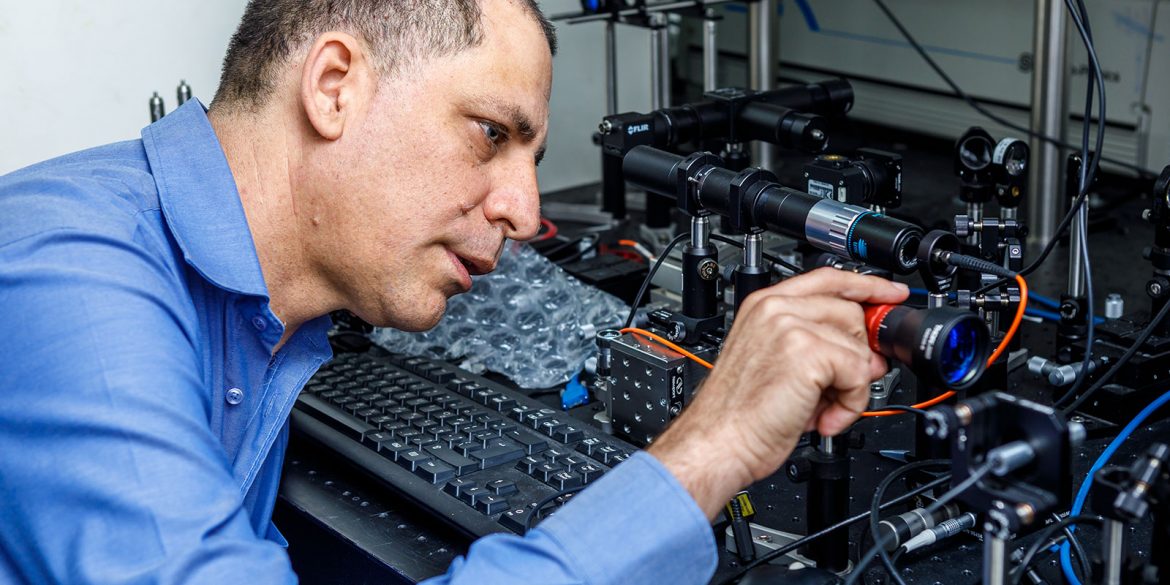
Photo credit: Yoram Aschheim
Perhaps you are wearing glasses while reading this or have a cell phone, binoculars, a virtual reality headset or telescope. All of them rely on high-quality lenses, which are bulky, expensive and heavy—especially when considering drones and satellites, where every gram counts.
However, that is all about to change. New, cheap, lightweight flat lenses – around a thousandth of the thickness of a human hair – will be making their move the research labs to our shops and homes. Currently, there are several kinds of flat-lens technologies available. However, the challenge is to know which version is best suited for the specific application for which it was designed. This problem has been solved by Professor Uriel Levy, Director of the Hebrew University of Jerusalem (HU)’s Center for Nanoscience and Nanotechnology, together with postdoc student Dr. Jacob Engelberg. They established a standard method to compare flat-lens technologies and designs, and published their findings in the leading journal Nature Photonics.
New, flat lenses offer clear advantages over conventional lenses. With conventional lenses, the “stronger” the lens (the higher the prescription), the greater the curvature. Further, the larger the lens diameter, the thicker the lens. This has implications—in both weight and size–for products, such as consumer electronics, cellphones, VR headsets, and drones where the push is to make them as light as possible.
The new flat lenses are incredibly thin and as the name suggests – they are flat rather than curved. However, there are different flat lenses designs and technologies on the market and few guideline vis a vis which lens would be most appropriate for a given need. Further, claims of success have been difficult to assess since there is no universally accepted method for comparison of these lenses. And, with a simple method of production, based on those used to create silicon chips, these new lenses will be extremely cheap and readily available. Engelberg and Levy stepped in to create a proper method of comparison. “Adopting the standardized characterization methods that we’ve proposed will help this field progress,” he shared.
FUNDING: Israel’s Ministry of Science and Technology, Israeli Innovation Authority.
Click here for further photos
